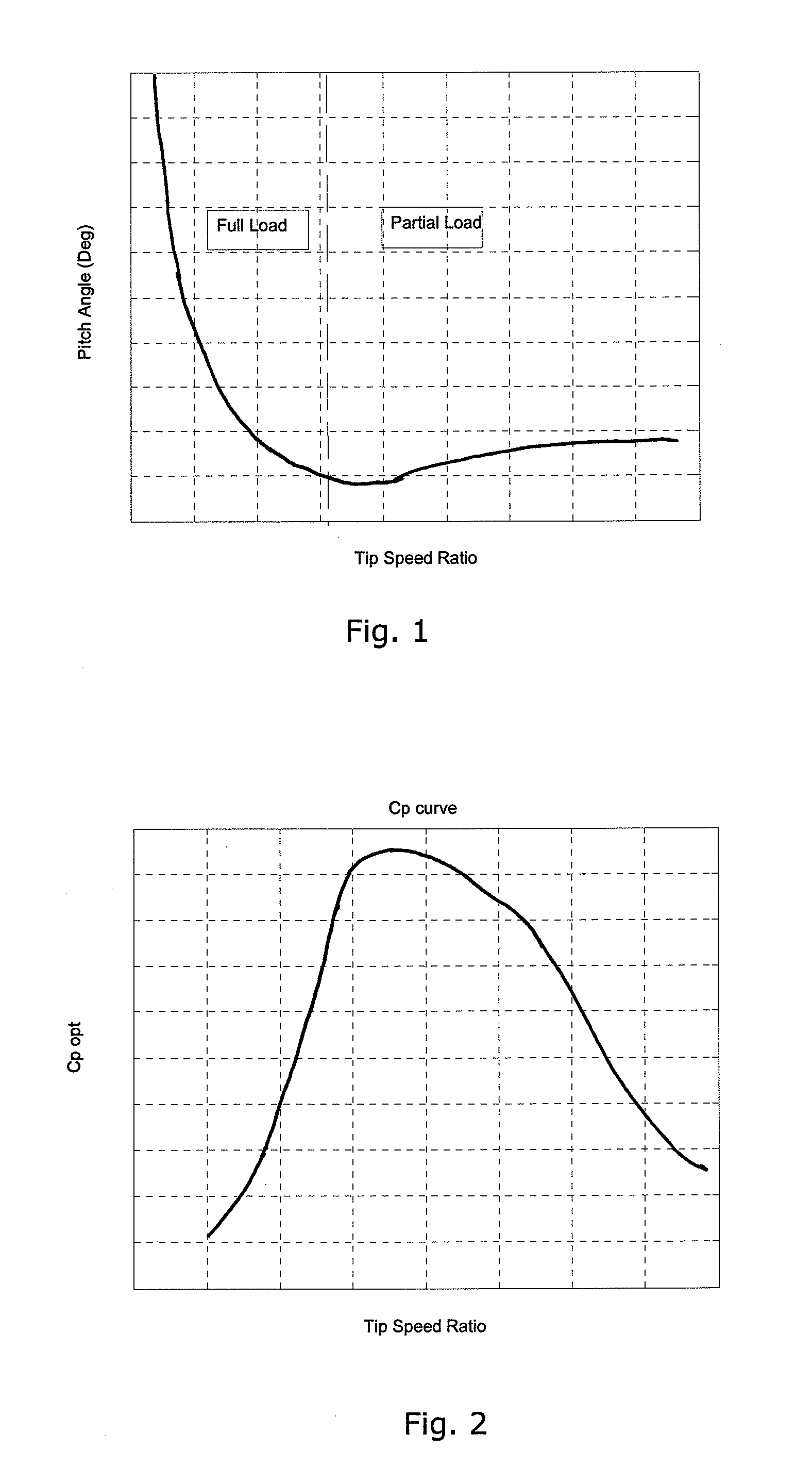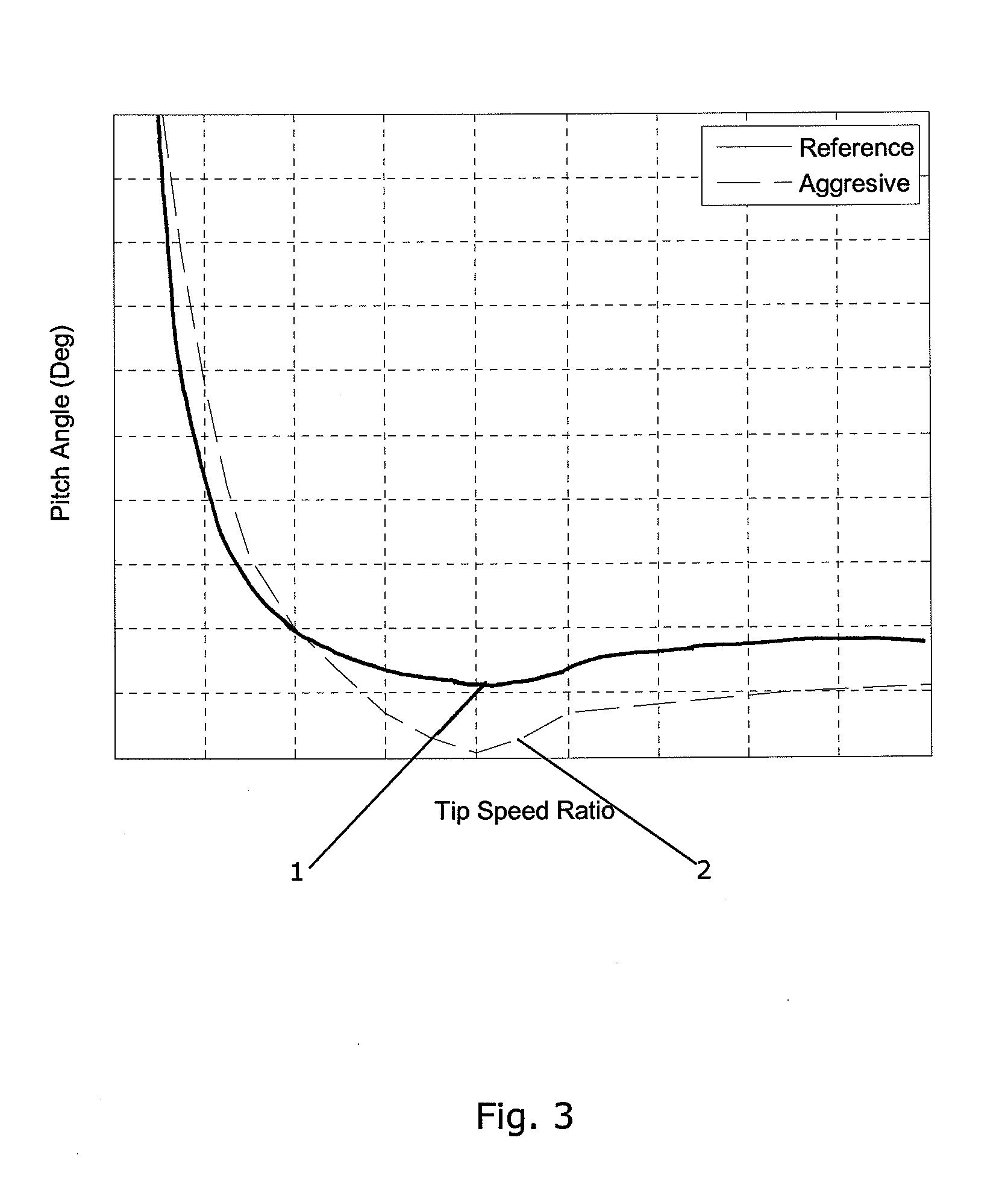Method for operating a wind turbine at improved power output
a technology of wind turbine and power output, which is applied in the direction of optimizing machine performance, motors, engine control, etc., can solve the problems of rotor blade stalling, blade separation, and airflow over the blad
- Summary
- Abstract
- Description
- Claims
- Application Information
AI Technical Summary
Benefits of technology
Problems solved by technology
Method used
Image
Examples
Embodiment Construction
[0005]It is an object of embodiments of the invention to provide a method for operating a wind turbine in which the annual energy production is increased as compared to prior art operating methods, without increasing the risk of the blades stalling.
[0006]It is a further object of embodiments of the invention to provide a method for operating a wind turbine in which the annual energy production is increased as compared to prior art operating methods, without increasing the risk of overload on one or more components of the wind turbine.
[0007]According to the invention there is provided a method for operating a wind turbine, the wind turbine comprising a rotor having a set of wind turbine blades, said rotor being mounted on a tower, the method comprising the steps of:[0008]providing a curve defining optimal pitch angle as a function of tip speed ratio for the wind turbine blades or as a function of wind speed,[0009]modifying at least a part of said optimal pitch angle curve by applying...
PUM
 Login to View More
Login to View More Abstract
Description
Claims
Application Information
 Login to View More
Login to View More - R&D
- Intellectual Property
- Life Sciences
- Materials
- Tech Scout
- Unparalleled Data Quality
- Higher Quality Content
- 60% Fewer Hallucinations
Browse by: Latest US Patents, China's latest patents, Technical Efficacy Thesaurus, Application Domain, Technology Topic, Popular Technical Reports.
© 2025 PatSnap. All rights reserved.Legal|Privacy policy|Modern Slavery Act Transparency Statement|Sitemap|About US| Contact US: help@patsnap.com



